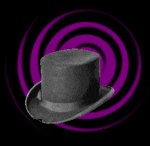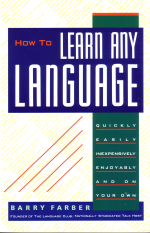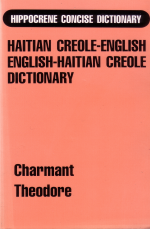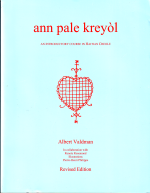

On Learning Kreyòl
I must confess that I find it hard to imagine how someone could devote any significant amount of time to the study of Vodou without learning at least some Kreyòl.
Kreyòl Ayisyen (Haitian Creole) is one of the two official languages of Haiti and the language spoken by the vast majority of the population. It's estimated that something like 7.3 million of Haiti's 8.1 million inhabitants speak the language.
Learning Kreyòl isn't especially easy (especially if you're currently unilingual), but there are some aspects of the language that make it easier than some other languages. For example, Kreyòl is a phonetic language. Sounding out written words is a pretty straight-forward exercise once you've figured out how to sound out the individual letters. Also, Kreyòl doesn't really have silent letters. So a word like "pale" has two syllables.
Here are some of the things I have done to learn Kreyòl.
First up, I was lucky to have a few years of French classes from grade school and high school. Knowing French helps me get the sounds right, and sometimes I can figure out a word based on what French word it sounds like. Going the other way is actually not so helpful. Knowing how to say something in French often doesn't help me figure out how to say it in Kreyòl.

First, I recommend the following book:
Barry Farber, How to Learn Any Language: Quickly, Easily, Inexpesively, Enjoyably and on Your Own. New York: Citadel Press, 1991.
This book provides a lot of good suggestions about how to pick up languages. In the book, Farber suggests four key strategies:
- Multiple Tracks of learning
- Using moments of downtime to practice vocabulary
- Using memory aids in the form of mnemonics
- Take the plunge and use the new language in the real world



Multiple Tracks of Learning
Farber suggests that you can't just use one source of learning. It's not that you shouldn't buy that language tape or phrase book, it's that you should also get some other things as well. Here are some of the items I purchased to help me practice:
- 101 Languages of the World
This piece of software is designed to help you learn a particular language. One of the languages in the package is Kreyòl. It's mostly good for a set of quizzes and games that can test you on vocabulary. It also has a number of words and sentences that it can play to you so that you can hear the language. - Haitian Creole-English/English-Haitian Creole Dictionary
I actually have two of these dictionaries that provide translations of individual words. - Ann Pale Kreyòl
This introductory course in Kreyòl includes both audio (cassette tapes or CDs) and a text book. If you're going to purchase this course, do not buy it from Amazon or any other book seller. Go directly to the Indiana University Creole Institute and order it from them. It's much cheaper.
Use Moments of Downtime to Practice
Here's one of the niftiest ideas from Farber's book: take a bunch of 3" by 5" blank recipe cards. Cut them into quarters (giving you 1½" by 2½" cards).
Now, flip through the Kreyòl-English dictionary and pick out some words at random. Write the Kreyòl word on one side of a card and the English translation on the other side. Start with a stack of 20 or 40 such cards, and carry them with you everywhere. Stick them in your purse or knapsack or your back pocket.
Any time you're waiting in line, or riding the bus or going to the bathroom, you can pull out the cards and test your vocabulary. Every day has several moments in which you can practice. Pull out the cards, look at one of the words, and keep looking at it until you remember the translation.
Once you've mastered that first batch, start adding more cards. You can also put common phrases ("What time is it?" "Kilè li ye?") on the cards.
Mnemonics
This is a section that you really have to read in Farber's original book. I don't feel that I can do his description justice. In short, to help remember the translations for words, you should come up with a mnemonic -- figure out what English words the Kreyòl word sounds like, and then make up a little story that includes both the English meaning of the Kreyòl word and the Engligh words that the Kreyòl sounds like. These stories will actually help you remember the vocabularly better.
But, as I said, Farber says this much better than I do. So read this section of his book.
Take the Plunge
Find a native speaker, and practice. Depending on where you live, this can be very hard. I live in Toronto, where there isn't much of a Haitian community.
I found it immensely helpful to take my trip to Haiti in 2005. I travelled alone and had to muddle my way through ordering food, renting rooms, finding buses, etc. all in Kreyòl.
Haiti is especially good for this. Haitians interact much more frequently than, say, Torontonians. Every day was an exercise in practicing my Kreyòl with someone I'd just met.
Copyright © 2006 by B.C. Holmes. Last updated April 22nd, 2006.
Back to the main page.